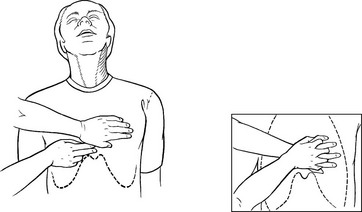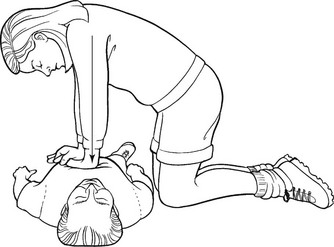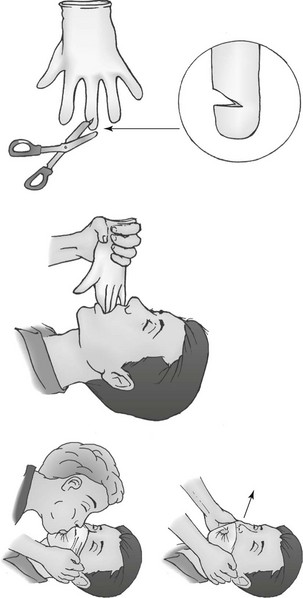Life-Threatening Emergencies (Rescue Breathing/CPR/Choking)
Basic Resuscitation
Adult
1. Check the patient for unresponsiveness. If the person is not responsive and not breathing or not breathing normally, call for help and return to the patient.
2. C: If the patient is still not breathing normally, coughing, or moving, check for a carotid pulse for no longer than 10 seconds. If no pulse is detected in 10 seconds, begin chest compressions. Push down in the center of the chest a distance of 5 cm (2 inches) 30 times. Pump hard and fast at the rate of at least 100 pumps per minute, faster than once per second (Figs. 25-1 and 25-2).

FIGURE 25-1 Hand position for chest compressions in CPR.

FIGURE 25-2 Chest compressions: adult.
3. A: Tilt the head back, and lift the chin.
4. B: Pinch nose and cover the mouth with yours, and blow until you see the chest rise. Give two breaths. Each breath should take 1 second. An improvised CPR barrier may be crafted from a glove (Fig. 25-3).
5. Continue with 30 pumps and two breaths until help arrives, then the rescuers should switch roles every five cycles, continuing at a ratio of 30 : 2 to minimize fatigue. A brief resuscitation pause to assess for the presence of spontaneous pulses should be performed every 2 minutes.







